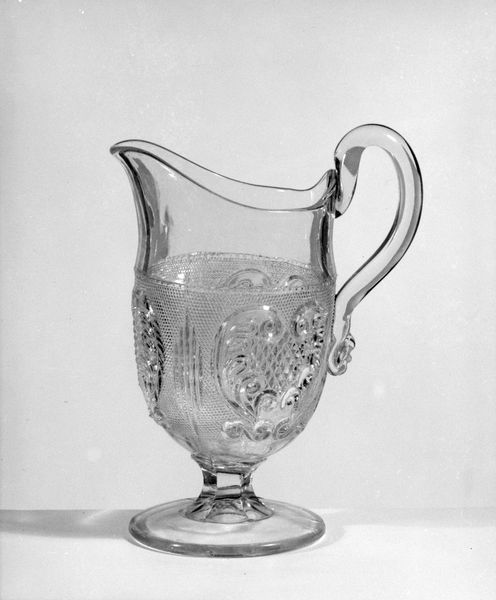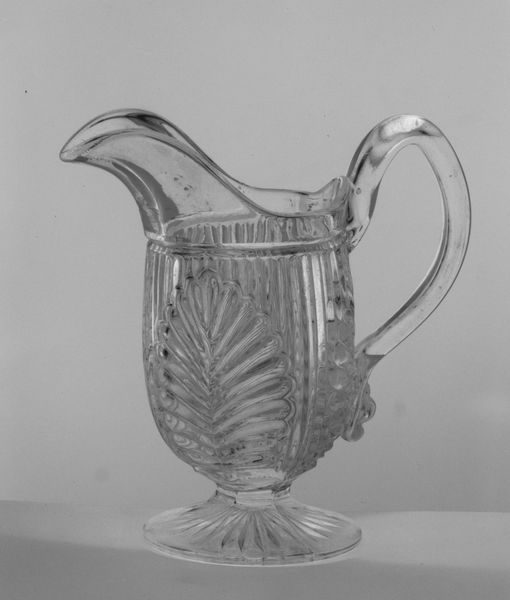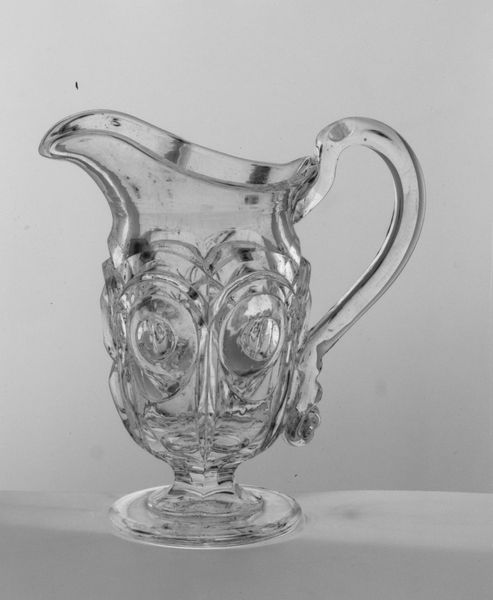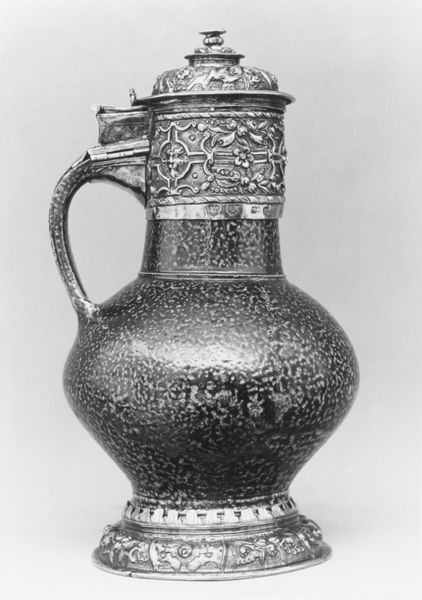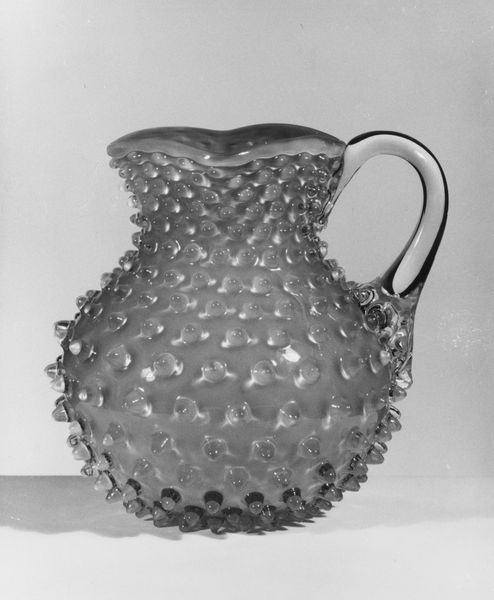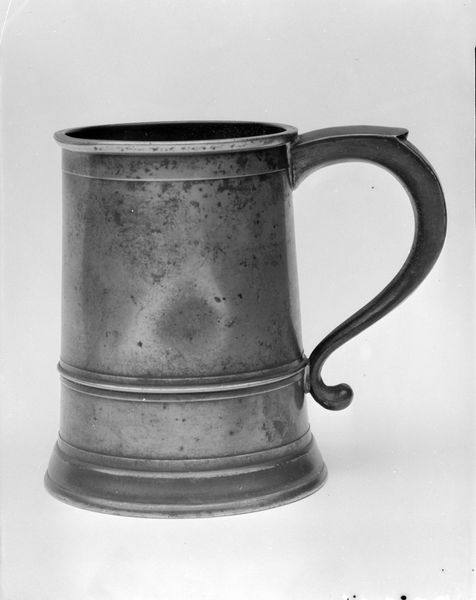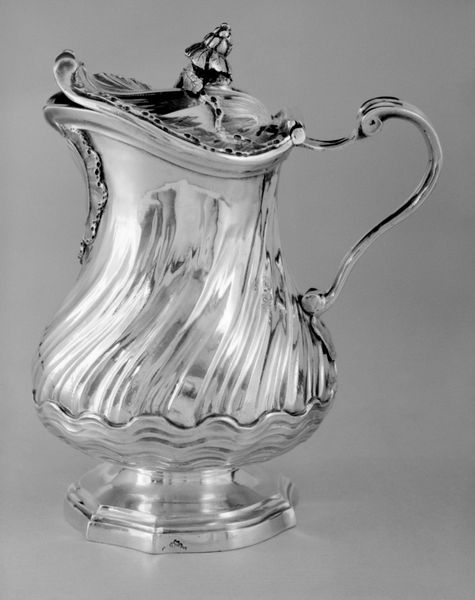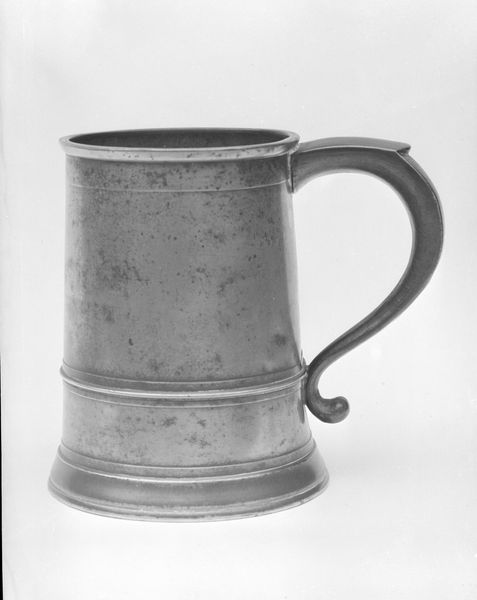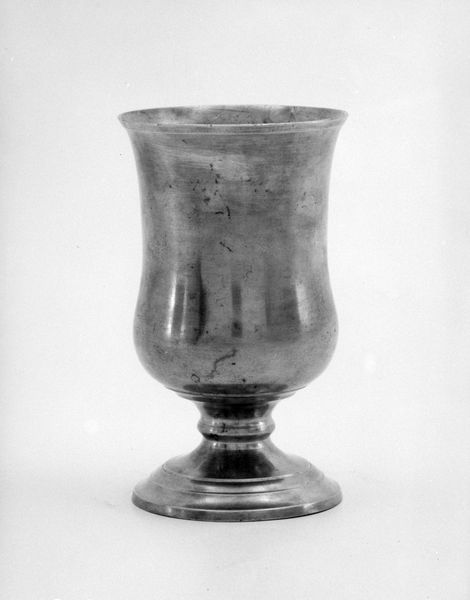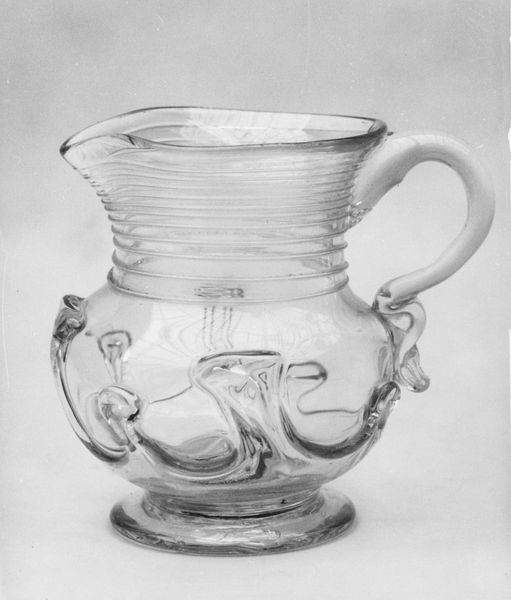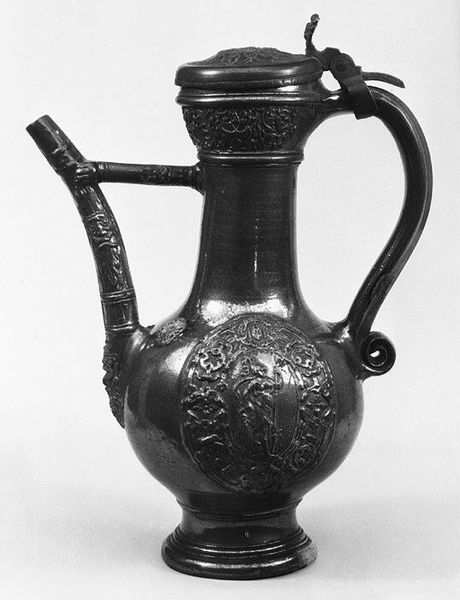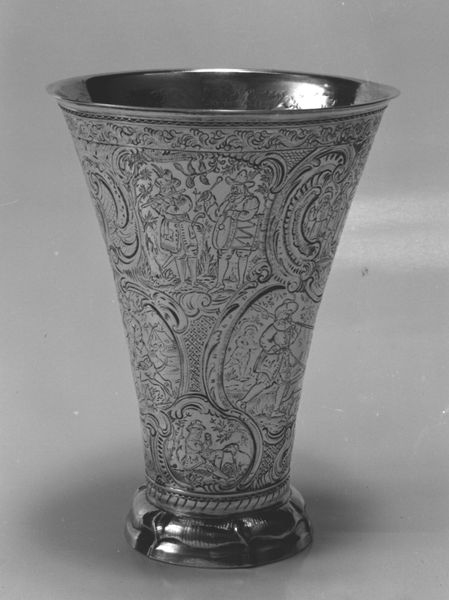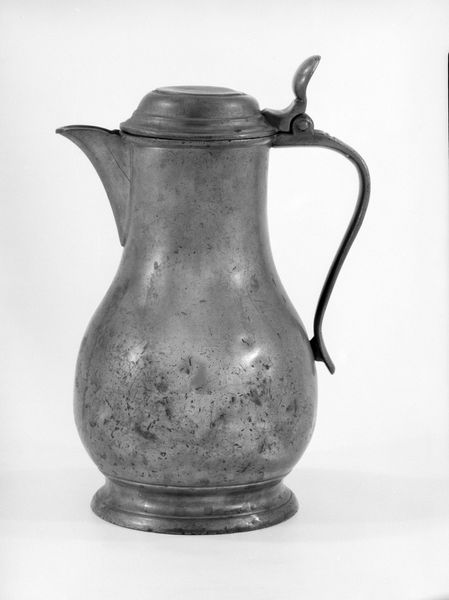
#
3d sculpting
#
3d printed part
#
jewelry design
#
ring
#
sculptural image
#
culinary art
#
black and white theme
#
appetizing
#
stoneware
#
england
#
macro photography
Dimensions: H. 6 3/4 in. (17.1 cm)
Copyright: Public Domain
Curator: Here we have a stoneware milk jug, made around 1750 to 1760 by the Wedgwood-Whieldon partnership here in England. Editor: The surface mottling is rather striking; it almost anticipates later abstract expressionist techniques with its swirling contrasts. It feels strangely modern for its time. Curator: Precisely, let's consider the cultural landscape of the 18th century. As the emerging middle class gained purchasing power, the demand for fashionable tablewares skyrocketed. This partnership tapped into a growing consumer desire, democratizing access to beautifully crafted objects previously enjoyed mostly by the elite. The stoneware itself—strong and relatively inexpensive to produce—speaks to that market accessibility. Editor: I’m drawn to the relationship between form and surface treatment here. The jug has a classical silhouette—observe its gently curved body, the scrolled handle, the tri-footed base—yet the mottled glaze disrupts the traditional, almost mimicking natural materials like marble or granite. Curator: It is an interesting tension: nature meeting Neoclassicism through the craft process! There’s a subtle politics at play here too. By crafting items emulating luxury materials, the jug allows aspirations of upward mobility to become a reality for the rising bourgeoisie. The decorative motifs further suggest narratives of abundance and refined taste. These would’ve resonated profoundly in a society becoming more obsessed with conspicuous consumption and upward social mobility. Editor: The interplay between the organic mottled design and the geometric shaping seems so well calculated; you almost feel as though you’re reading different representational schemes as being separate within the object but acting to benefit the overall impression the milk jug conveys, in person or depicted through photographs, for instance. Curator: The handle does have this quality of seeming almost natural, it almost mirrors the trunk and branch structure you would find among deciduous trees. And by connecting nature and Neoclassical features, it subtly legitimizes the consumers’ tastes and place in society by reinforcing a commitment to permanence as well as modernity. Editor: I notice I’ve spent much time reflecting on the textures present; considering what purpose the jug would have and where it would have been held it adds more sensory impact through texture, adding to the value it presents beyond being merely presentable. Curator: Yes, beyond its immediate practical purpose, the milk jug becomes a cultural emblem—a conversation piece at tea tables, quietly reflecting a shifting social order. Editor: Absolutely, seeing how an artist applies shape, materials, and ornamentation here prompts thought and helps encourage greater historical context and relevance as we bring new perspectives into view.
Comments
No comments
Be the first to comment and join the conversation on the ultimate creative platform.
